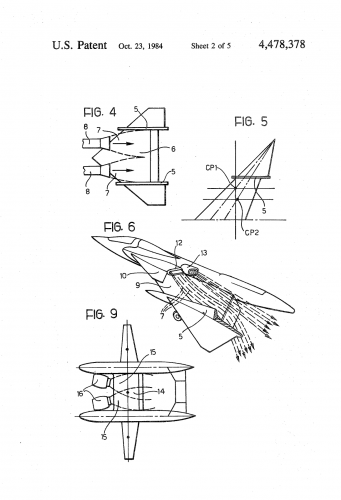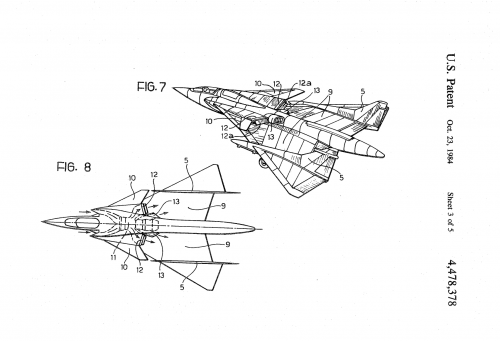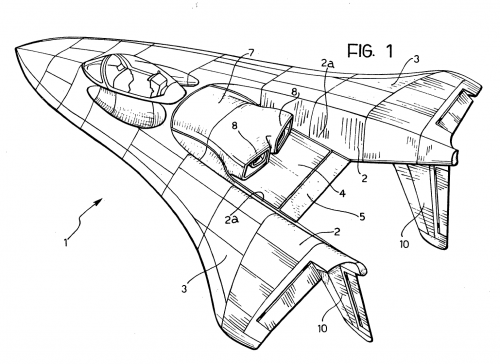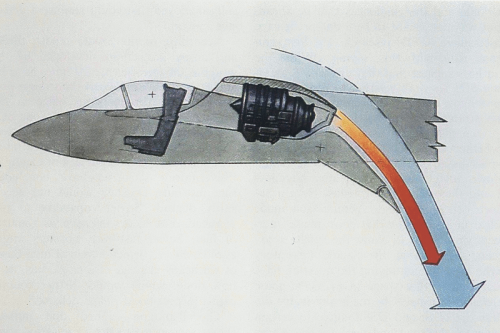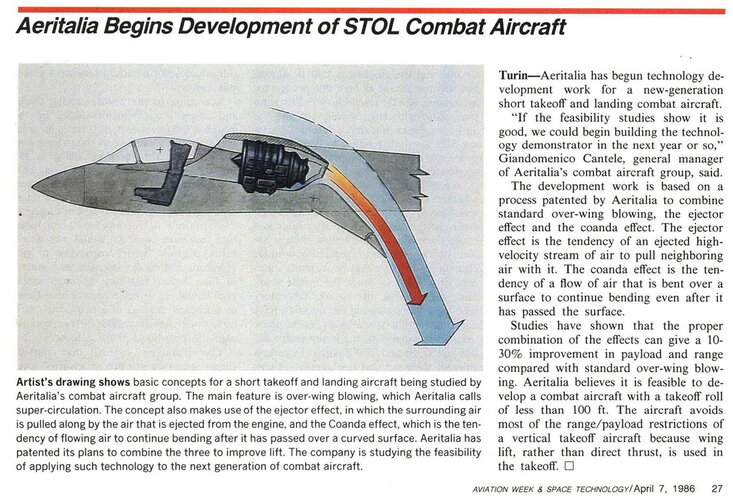Aeritalia Begins Development of STOL Combat Aircraft
Artist's drawing shows basic concepts for a short takeoff and landing aircraft being studied by Aeritalia’s combat aircraft group. The main feature is over-wing blowing, which Aeritalia calls super-circulation. The concept also makes use of the ejector effect, in which the surrounding air is pulled along by the air that is ejected from the engine, and the Coanda effect, which is the tendency of flowing air to continue bending after it has passed over a curved surface. Aeritalia has patented its plans to combine the three to improve lift. The company is studying the feasibility of applying such technology to the next generation of combat aircraft.
Turin—Aeritalia has begun technology development work for a new-generation short takeoff and landing combat aircraft. “If the feasibility studies show it is good, we could begin building the technology demonstrator in the next year or so," Giandomenico Cantele, general manager of Aeritalia’s combat aircraft group, said. The development work is based on a process patented by Aeritalia to combine standard over-wing blowing, the ejector effect and the coanda effect. The ejector effect is the tendency of an ejected high velocity stream of air to pull neighboring air with it. The coanda effect is the tendency of a flow of air that is bent over a surface to continue bending even after it has passed the surface.
Studies have shown that the proper combination of the effects can give a 10-30% improvement in payload and range compared with standard over-wing blowing. Aeritalia believes it is feasible to develop a combat aircraft with a takeoff roll of less than 100 ft. The aircraft avoids most of the range/payload restrictions of a vertical takeoff aircraft because wing lift, rather than direct thrust, is used in the takeoff.

